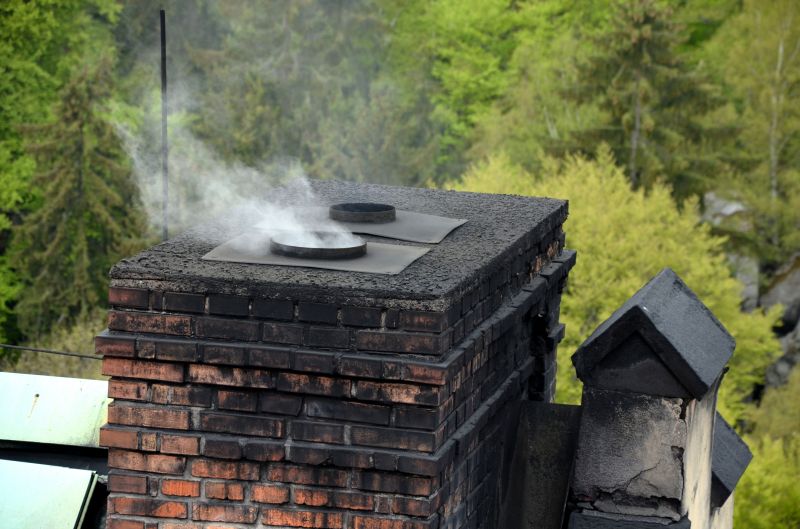Leading Choices For Chimney Pipe Installation Parts And Fittings
Identify the top options for essential parts that ensure a secure, durable, and efficient chimney venting system installation.
 Installing a chimney pipe requires careful selection of the right products to ensure safety, efficiency, and durability. The process involves connecting appliances such as wood stoves, fireplaces, or pellet stoves to a venting system that directs smoke and gases outside. Proper installation prevents leaks, ensures proper airflow, and maintains the integrity of the home’s structure. A variety of products are available to meet different installation needs, from flexible connectors to rigid pipe sections, each designed to fit specific setups and requirements.
Installing a chimney pipe requires careful selection of the right products to ensure safety, efficiency, and durability. The process involves connecting appliances such as wood stoves, fireplaces, or pellet stoves to a venting system that directs smoke and gases outside. Proper installation prevents leaks, ensures proper airflow, and maintains the integrity of the home’s structure. A variety of products are available to meet different installation needs, from flexible connectors to rigid pipe sections, each designed to fit specific setups and requirements.
Top Overall Option
High-Quality Chimney Pipe Kit
A comprehensive chimney pipe kit that includes various sections, connectors, and supports designed for versatile installation. Made from durable, heat-resistant materials, this kit offers flexibility to customize your venting system while maintaining safety standards. Its modular design simplifies assembly and disassembly, making it suitable for both new installations and upgrades. Ensuring compatibility with different appliances and configurations, this kit aims to provide a reliable solution for chimney pipe needs.
Types of Products For Chimney Pipe Installations
Rigid Metal Chimney Pipe
Solid, durable pipes designed for long-term venting solutions, offering stability and resistance to high temperatures.
Flexible Chimney Liner
Flexible liners that adapt to complex or irregular chimney shapes, facilitating easier installation in existing structures.
Double-Wall Stove Pipe
Insulated pipes suitable for connecting appliances to the main chimney, providing safety and heat retention.
Single-Wall Chimney Pipe
Basic venting pipes used for short runs or interior installations, typically easier to install but less insulated.
Chimney Pipe Adapters
Connectors that facilitate transitions between different pipe sizes or types, ensuring a secure fit.
Elbows and Bends
Angles that allow for directional changes within the chimney system, essential for navigating tight spaces.
Support Brackets and Hangers
Accessories designed to secure the chimney pipe to walls or ceilings, maintaining system stability.
Insulation Wraps
Materials used to insulate the chimney pipe, reducing heat loss and protecting surrounding areas.
Rain Caps and Termination Caps
Protective covers that prevent moisture, debris, and animals from entering the chimney system.
Pipe Seals and Gaskets
Sealing components that ensure airtight connections between pipe sections and accessories.
Thimble and Wall Pass-Throughs
Components that allow safe passage of chimney pipes through walls or ceilings with proper clearance.
Cleaning and Inspection Ports
Access points that enable maintenance, inspection, and cleaning of the chimney system.
Firestop Collars
Fire-resistant collars that seal around pipes passing through combustible materials, enhancing safety.
Heat Shields
Protective barriers that prevent heat transfer to nearby combustible surfaces.
Popular Choices
A versatile option for retrofitting or complex chimney configurations, allowing for easier installation in irregular spaces.
Commonly used for connecting appliances to the main vent, providing insulation and safety features.
Preferred for long-term installations due to its stability and durability in high-temperature environments.
Essential for navigating turns and corners within the venting system, available in various angles.
Popular for protecting chimney openings from weather elements while allowing proper ventilation.
Widely used to secure pipes along walls or ceilings, ensuring system stability over time.
Help in suspending chimney pipes securely, especially in long runs or ceiling installations.
Commonly used to ensure airtight connections between sections and accessories.
Facilitate safe and code-compliant passage of pipes through exterior or interior walls.
Popular for maintenance, these ports allow easy inspection and cleaning of the system.
Choosing the appropriate components depends on factors like the type of appliance, the configuration of the space, and local building codes. It is essential to select high-quality materials that can withstand high temperatures and resist corrosion over time. Installation accessories such as adapters, elbows, and supports are also critical for creating a secure and effective venting system.
Safety should always be a priority when working with chimney pipes. Proper sealing, insulation, and clearance from combustible materials are necessary to prevent fire hazards. Regular maintenance and inspections are recommended to ensure the system remains in good condition, especially if the installation involves complex or long runs of pipe. Consulting with professionals or adhering to manufacturer instructions can help achieve a reliable and safe setup.
Overall, investing in the right products for chimney pipe installation can facilitate a smoother installation process and contribute to the long-term performance of your venting system. Whether you’re upgrading an existing chimney or installing a new one, understanding the variety of available products can help you make informed choices tailored to your specific needs.
Key Buying Considerations
- Compatibility with your specific appliance and venting requirements.
- Material quality, ensuring resistance to high temperatures and corrosion.
- Appropriate pipe diameter to match the appliance outlet and chimney inlet.
- Type of pipe (single-wall or double-wall) based on safety and insulation needs.
- Ease of installation, especially if retrofitting or working in tight spaces.
- Local building codes and safety regulations compliance.
- Availability of necessary accessories like elbows, supports, and seals.
- Weather protection features such as rain caps and termination covers.
- Durability and lifespan of materials used in the pipe system.
- Maintenance features like inspection ports and cleaning access.
- Proper clearance from combustible materials as per safety standards.
- Ease of disassembly and reconfiguration if future adjustments are needed.
- Cost considerations balanced with quality and safety features.
- Availability of professional installation services if needed.
- Warranty or guarantee offered by the manufacturer.
